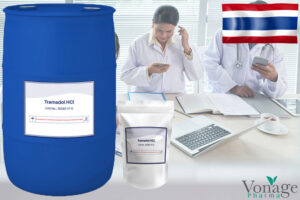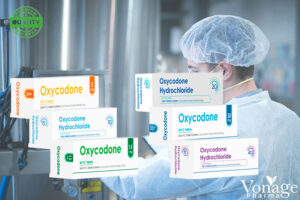The treatment landscape for rare lysosomal storage disorders has evolved significantly with the introduction of substrate reduction therapies. Among these, Miglustat generic has emerged as a vital option for patients with type 1 Gaucher disease who are not candidates for enzyme replacement therapy (ERT).
As global demand for affordable and effective treatments rises, the role of miglustat generic in both clinical practice and the pharmaceutical supply chain is expanding rapidly. This article explores the pharmacological profile, clinical efficacy, and market statistics for miglustat generic, offering insights for healthcare providers, researchers, and pharmaceutical stakeholders.
Understanding Miglustat Generic: Mechanism and Indications
Miglustat is an oral small-molecule inhibitor of glucosylceramide synthase, the enzyme responsible for the first step in glycosphingolipid synthesis. By blocking this enzyme, miglustat reduces the accumulation of glucosylceramide substrate that builds up due to the deficiency of glucocerebrosidase in Gaucher disease. This mechanism, known as substrate reduction therapy, helps mitigate the pathological storage of lipids in tissue macrophages, which is the hallmark of Gaucher disease. Miglustat is indicated for the treatment of mild to moderate type 1 Gaucher disease in adults who are not suitable for ERT. It is also approved in several countries for the management of Niemann-Pick disease type C, a rare neurodegenerative disorder.
Clinical Efficacy and Patient Outcomes
Clinical trials and real-world studies have demonstrated that miglustat can significantly improve key disease parameters in Gaucher patients. Notably, miglustat therapy has been shown to reduce liver and spleen volume, increase hemoglobin concentration, and improve platelet counts. These improvements translate to better management of anemia, thrombocytopenia, and organomegaly, which are common complications in Gaucher disease. Additionally, miglustat has been effective in maintaining clinical stability in patients previously managed with long-term ERT, offering a valuable oral alternative for those unable to continue infusions.
Market Statistics and Growth Projections
The miglustat generic API market is experiencing robust growth, driven by rising awareness of rare genetic disorders, increased diagnosis rates, and expanding access to specialized treatments. Recent market research values the global miglustat API market at USD 120 million in 2024. Analysts project that the market will reach a substantially higher value by 2033, growing at a CAGR of 9.5% from 2026 to 2033 (Verifiedmarketreports). The main applications remain in Gaucher disease and Niemann-Pick type C, but ongoing research may expand its indications further. Geographically, North America and Europe dominate the market. This is due to established diagnostic infrastructure, supportive reimbursement policies, and a higher prevalence of diagnosed cases. However, improving awareness and healthcare access are driving the fastest growth in Asia-Pacific and other emerging regions.
Advantages of Miglustat Generic in Healthcare
The introduction of the miglustat generic offers several advantages. Cost-effectiveness: Generic competition reduces treatment costs, making therapy more accessible to patients and healthcare systems. Supply security: Multiple manufacturers ensure a stable supply chain, minimizing the risk of shortages. Regulatory compliance: Generic APIs must meet stringent quality and bioequivalence standards, ensuring safety and efficacy. Technological advancements in API manufacturing are driving progress. Innovations like continuous processing and improved biochemical synthesis enhance production efficiency and product quality.
Safety Profile and Patient Considerations
Patients generally tolerate miglustat well, but they may experience side effects. The most frequently reported adverse effects include diarrhea, weight loss, gastrointestinal discomfort, and, less commonly, tremor, dizziness, and peripheral neuropathy. Dose adjustments may be necessary for patients with renal impairment. Healthcare professionals recommend regular monitoring to manage side effects and ensure optimal outcomes.
Future Directions: Research and Expanding Indications
The future of the miglustat generic is promising. Ongoing research is exploring its potential in other lysosomal storage disorders and rare metabolic diseases. Genetic screening is becoming more widespread. At the same time, researchers are validating new indications for miglustat API and FDF. As a result, demand for high-quality, affordable miglustat APIs will continue to rise.
Conclusion
The emergence of the miglustat generic has transformed the treatment paradigm for Gaucher disease. It offers an effective, oral, and affordable alternative for patients who are not candidates for enzyme replacement therapy. Miglustat generic has a strong safety and efficacy profile. It is also experiencing robust market growth and expanding global access. As a result, miglustat generic will play an increasingly vital role in rare disease management. Pharmaceutical providers and healthcare professionals must stay informed about the latest trends and statistics in the miglustat API market. This understanding is essential for meeting patient needs and advancing therapeutic innovation.







